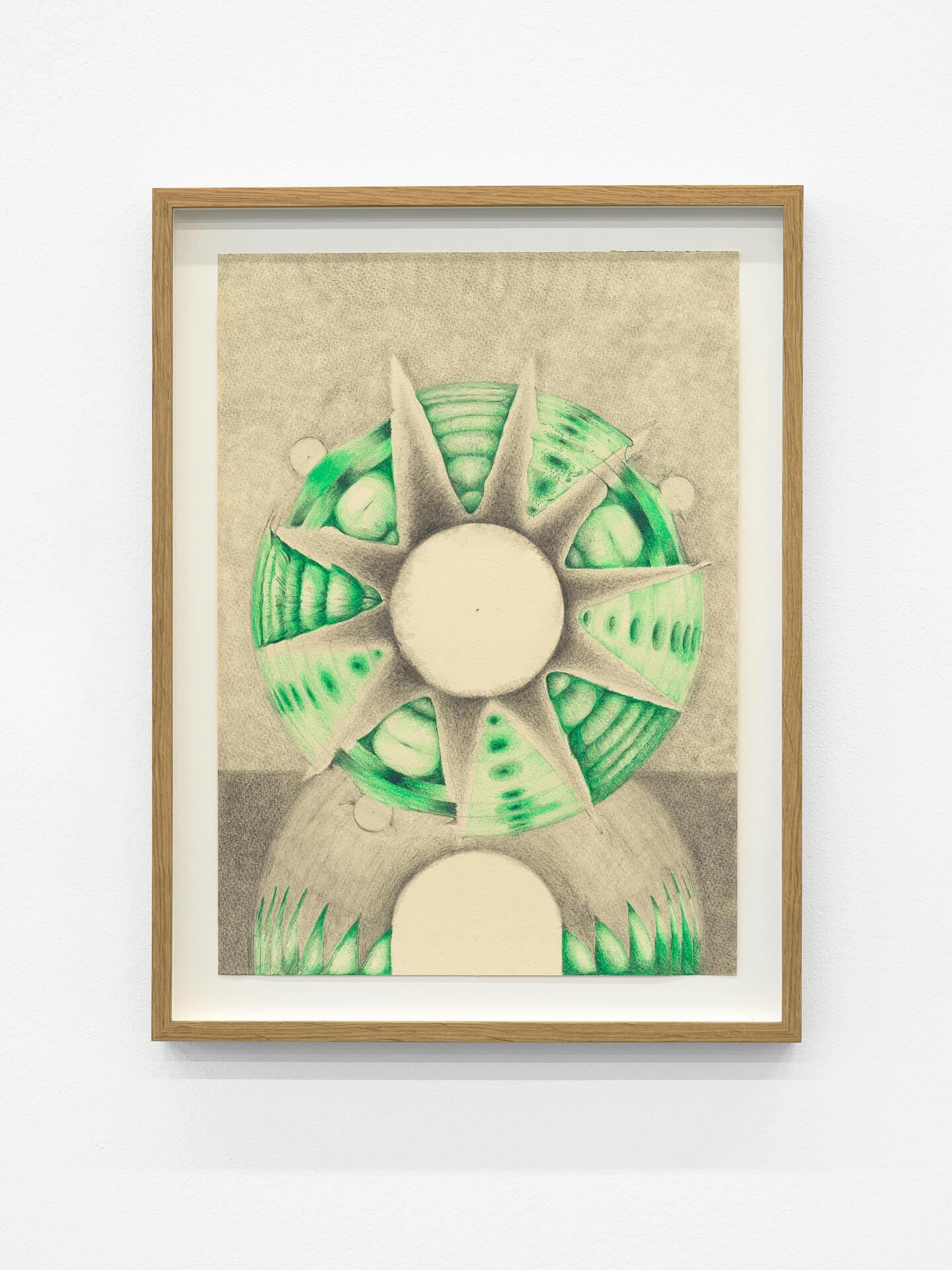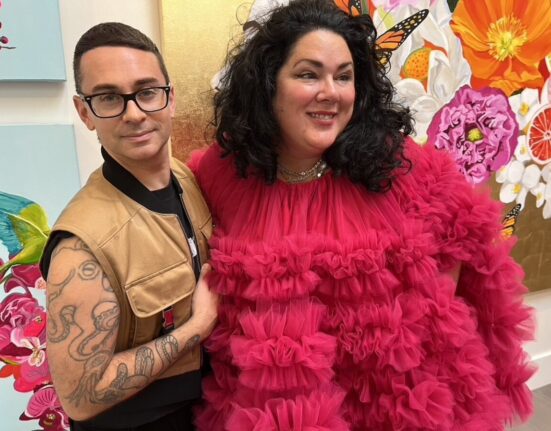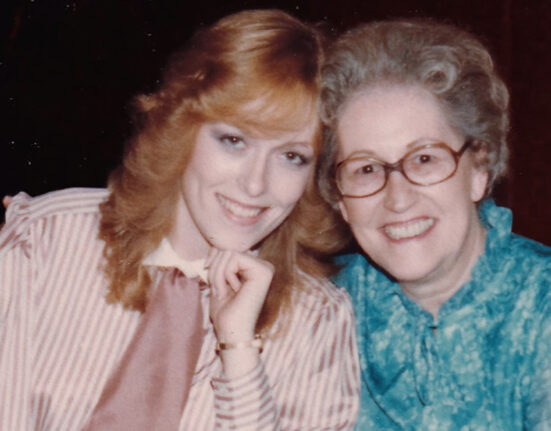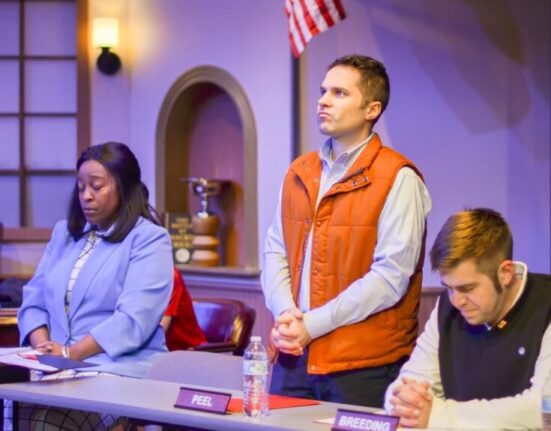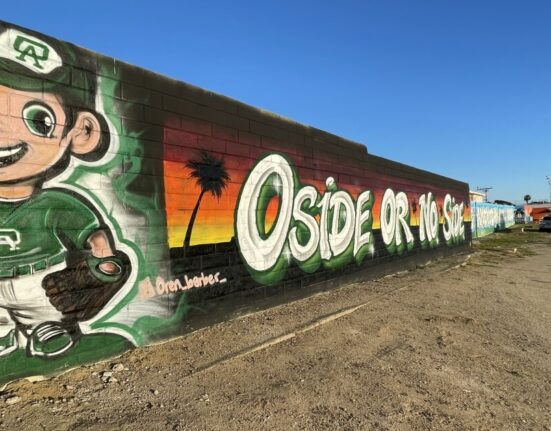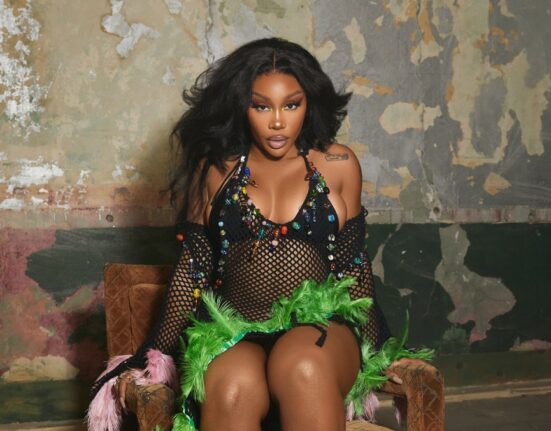In Vijay Masharani’s intricately absorbing videos and drawings, small gestures connect to larger systems. In his current exhibition at Kunsthalle Zürich, ‘Big Casino’, the motif of the circle predominates, prompting meditation on the surreal factuality of chance and emphasizing the politically ambiguous scale of the planetary versus the perceiving or suffering body. Masharani’s veneration of the possibilities of the small gestures of art is full of humour and pain. Here, he speaks to artist Hannah Black about some of the influences on his work and thought.

Hannah Black Let’s begin with circles, which have many significances in your work, especially in your current exhibition: a crowd’s attention concentrated on a single point, the egg from which life and death hatch, the globe as a vision of integral humanity, and so on. Yet, in Big Casino Zoom Lecture (2025), the performance lecture accompanying the show, you revealed that the first iteration of the circle in your work was a star shape that indicated dismemberment. What is the relationship between the circle as a whole and the threat of disintegration?
Vijay Masharani From the left-wing texts I read from the interwar period, especially the Frankfurt School, there’s a lot of wariness towards the circle. It’s a justifiable wariness of the idea of a false or reified totality and how that idea can be a pernicious myth to promise wholeness or total integration. A big part of the right-wing imaginary seems to be a primordial unity fantasy. But then, if you think about the circle as the image of the planet, the material fact of a shared world is a super important starting point for left-wing theorists such as Paul Gilroy. I also just like drawing circles. So, I was trying to approach them with a sense of their being provisional – just these cast-off symbols.

HB So the circle is both the possibility of fascism and of communism.
VM Yes, in short.
HB In your videos, such as Grazers (2025), the use of animation adds a hallucinatory and profoundly subjective dimension that also seems to be the dimension of life.
VM One of the artists that has helped me in the studio is Philip Guston, precisely because he considered his own life to be the substrate of the practice. When I’m trying to make art happen, the lens of life is, for me, the most generative. I realised in a conversation with the poet Benjamin Krusling that my work is more like life writing. It was an epiphany moment. That’s when I started letting go of a lot of my anxieties. I realised I could move through the world, always collecting stuff, and then begin to sandbox it together through a collage practice. For me, animation is an extension of that kind of haptic putting things together.

HB There has to be something sustaining and alive. You’ve said that you developed your drawing practice by producing perspective studies. You seem to relish the strangeness of perspective and how it hovers between abstraction and figuration.
VM I remember this drawing with a vortex in the background, which I made a few years ago. I just liked how refractory, unstable and vibrating the whole thing felt. Every subsequent drawing would feel dead compared to that one. Eventually, I realised that I’ve always been able to get somewhere else if I’m just a little bit more forgiving of myself.
HB As you mentioned in your lecture, perspective in painting and European colonial conquest happened at around the same time. In this schema of thought, the line or grid functions like the W.E.B. Du Bois line you quoted, ‘a spider from hell spinning a web of American gold that envelops the earth’ (The Black Flame, 1976). The circle is a repudiation of brute linearity. But your work also refuses the simplicity of this binary.
VM The state has a set of legal procedures that authorise, say, carving up the body of an illegitimate subject, or partitioning territory. In The Problem of the Negro as a Problem for Thought (2014), Nahum Dimitri Chandler described race as a system of repetitive marks. When I returned to art after an academic degree, it was really like: wow, drawing a line is loaded. I love those games that are like, how far back in history did all the problems start? I joke that it was the moment that someone drew a line.

HB But in your work, the circle isn’t simply the good antithesis of the bad line. The circle can also represent solipsism or a desire for total control. On the positive side of the linear, you talk about how science is a means of survival; it’s not only the bad enlightenment or whatever. You sometimes seem like a scientist of art.
VM Maybe that is a relationship with science in my family, because the people in my family are very fact and number-oriented. I was reading Morton Feldman’s Give My Regards to Eighth Street (2004), in which he writes that art is more like chemistry in its relationship to social good. It might look like artists are doing something relatively narrow and very specific; how it will come to bear on the broader culture is not yet known. Still, we’ve developed procedures and structures to be systematic about getting from something very experimental. It feels like we’re fumbling in the dark, almost, to something that could help.
HB In the videos in ‘Big Casino’, we see New York subway tunnels, the billionaire fortresses of San Francisco, and then there’s the negation of space of the hospital room. I wanted to hear more about the perspectival shifts between these different places.
VM It is related to this life writing thing. I have found less success in my work came from planning than from wandering around and getting surprised at what I stumbled upon. When I moved to Queens after my undergraduate degree, I felt very unmoored, so I sought out Indian neighbourhoods that I had heard referenced in songs. I went to Richmond Hill because Heems rapped about it in ‘Soup Boys’ (2012). It happened to be around Halloween, and a lot of the houses had the prayer flags out front, but also plastic decorations. I thought that juxtaposition was funny. And that became the basis of the videos with rotary sequences. It’s all just happenstance. Then I was like, that worked so well, I’m going to try to do it again. But it’s impossible. You go back to the same neighbourhood, but you’re different. I used to be afraid of repeating myself, but now, even if I try to repeat myself, I realise that that’s impossible.

HB I’m thinking about the happenstance of migration.
VM Yes. My aunt was like, I’m so grateful to Idi Amin for forcing us to leave Uganda because otherwise, I’d be dead from an asthma attack.
HB I’m imagining her meeting Amin in the afterlife and this very confused interaction between them. Guston proposed a certain relationship to chance, right?
VM Yes, in 12 Americans (1956), Guston wrote: ‘Usually, I am on a work for a long stretch, until a moment arrives when the air of the arbitrary vanishes, and the paint falls into positions that feel destined.’
HB So good. I’m thinking about the art historical rupture of modernity and how it opened the artwork up to contingency, away from a particular conception of religious or social obligation, and towards another. What does art do to alter the wound that chance inflicts on meaning?
VM That’s a dope question. I don’t know. The question of contingency and unknowability has really been hitting me now, with my illness. If these chromosomes split and then fuse together, then you’re dead. Talk about a radical sense of contingency. All the symbols and letters of medicine really do mediate biological and chemical processes.
HB In your writing, you seem to see the body, at least in the moment of illness, as stubbornly resistant to interpolation, even indifferent to the self. But maybe illness is a kind of interpolation.
VM People generally don’t like to talk and hear about illness. In Literature and Evil (1957), Georges Bataille writes about insects drawn to the light and humans flocking to things that connote life and fleeing from things that represent death. Artworks are also memento moris that register the belaboured effort to keep clamping down on mortality.

HB It feels like, perhaps paradoxically, your illness has enlivened something in your work.
VM I feel much more solid. Art feels very easy now. You need to put the time in, of course. Before I got sick, I would ask, is this the right decision? But that’s a fake problem. It’s not real. Yes, I feel more alive than before. That’s my experience, but I’m hesitant to generalize because it can be problematic to associate suffering with enlightenment. Fred Moten wrote a piece on American Artist where he said, what’s the meaning of all this suffering, these historical trajectories of degradation, what does it all mean? And he’s like, nothing. ‘Our travail shows us nothing at all.’ (Cura, 2022)
HB What came into my head as you said that was corny, it was the Shakespeare line from A Midsummer Night’s Dream: ‘The poet’s pen gives to airy nothing, a local habitation and a name.’ There’s something about art not imbuing meaning but taking the nothingness of happenstance and giving it a form.
VM Yes, it doesn’t fix the wound, but it gives it a form. Louise Bourgeois said: ‘Art is a guarantee of sanity but not liberation.’ I’ve been trying to figure out what Ad Reinhardt wanted artists to be. He saw artists as having a political function, but you would ruin the whole thing if you named it. So, artists are basically like secret stabilisers of contingency.
Vijay Masharani’s ‘Big Casino’ is at Kunsthalle Zürich until 25 May
Main image: Vijay Masharani, ‘Big Casino’, 2025, installation view. Courtesy: the artist and Kunsthalle Zürich; photograph: Cedric Mussano

